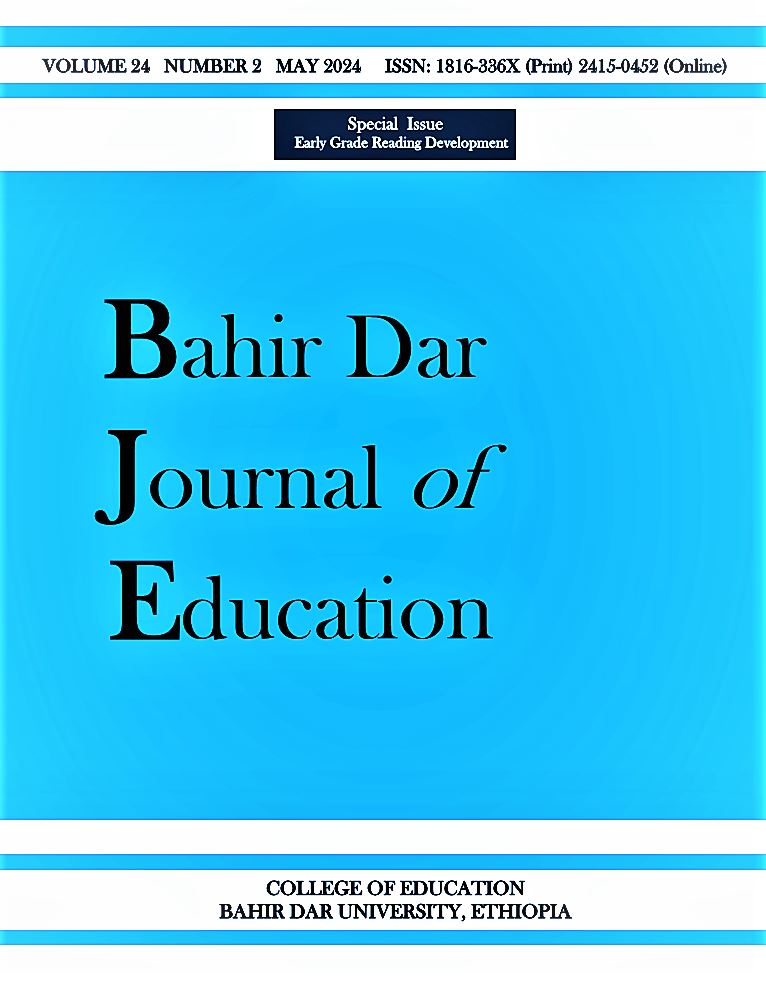Explicit instructional moves in teaching reading in grade one Observations from four Amharic classrooms
Abstract
In response to the recurring poor literacy achievement among learners in various mother tongue languages in Ethiopian schools, this study investigated teaching practices of four Amharic teachers atthree government schools in Hawassa city, focusing on how the instructional content is implemented and what explicit instructional moves the teachers used in teaching early reading. Through a qualitative case study approach, utilizing video-recordings and checklist-based observations as data collection tools, thestudy revealed variations in implementation among all four teachers. Modelling, discussion, feedback and guided practice have been found to be the explicit instructional moves most prominently used by the teachers. Elements of explicit instruction seemed to be implemented simultaneously, albeit randomly, and the lesson content was delivered systematically from simple to more complex. The instructional content was found to be primarily grapho-phonological, where the fidälwas the minimal content unit of theinstruction. Finally, the findings indicate that teaching practices are influenced by external factors such as lack of literacy materials and inadequate Amharic language competence among some teachers. The results might suggest the need for future policy changes and practical interventions aimed at enhancing teachers’ competence and improving the provision of adequate literacy instructional materials

Authors who publish with this journal agree to the following terms:
- Authors retain copyright and grant the journal right of first publication with the work simultaneously licensed under a Creative Commons Attribution License that allows others to share the work with an acknowledgement of the work's authorship and initial publication in this journal.
- Authors are able to enter into separate, additional contractual arrangements for the non-exclusive distribution of the journal's published version of the work (e.g., post it to an institutional repository or publish it in a book), with an acknowledgement of its initial publication in this journal.
- Authors are permitted and encouraged to post their work online (e.g., in institutional repositories or on their website) prior to and during the submission process, as it can lead to productive exchanges, as well as earlier and greater citation of published work (See The Effect of Open Access).
